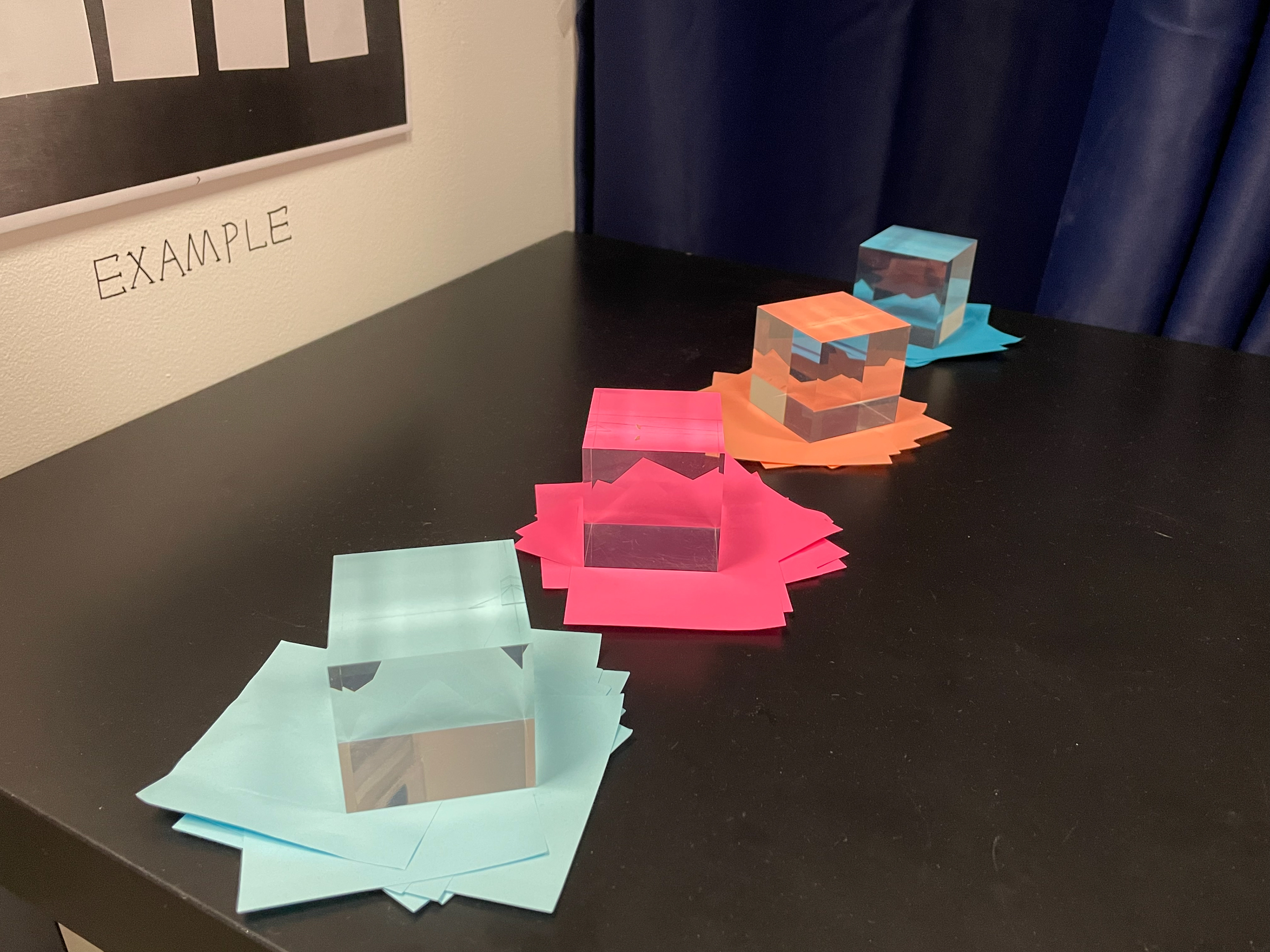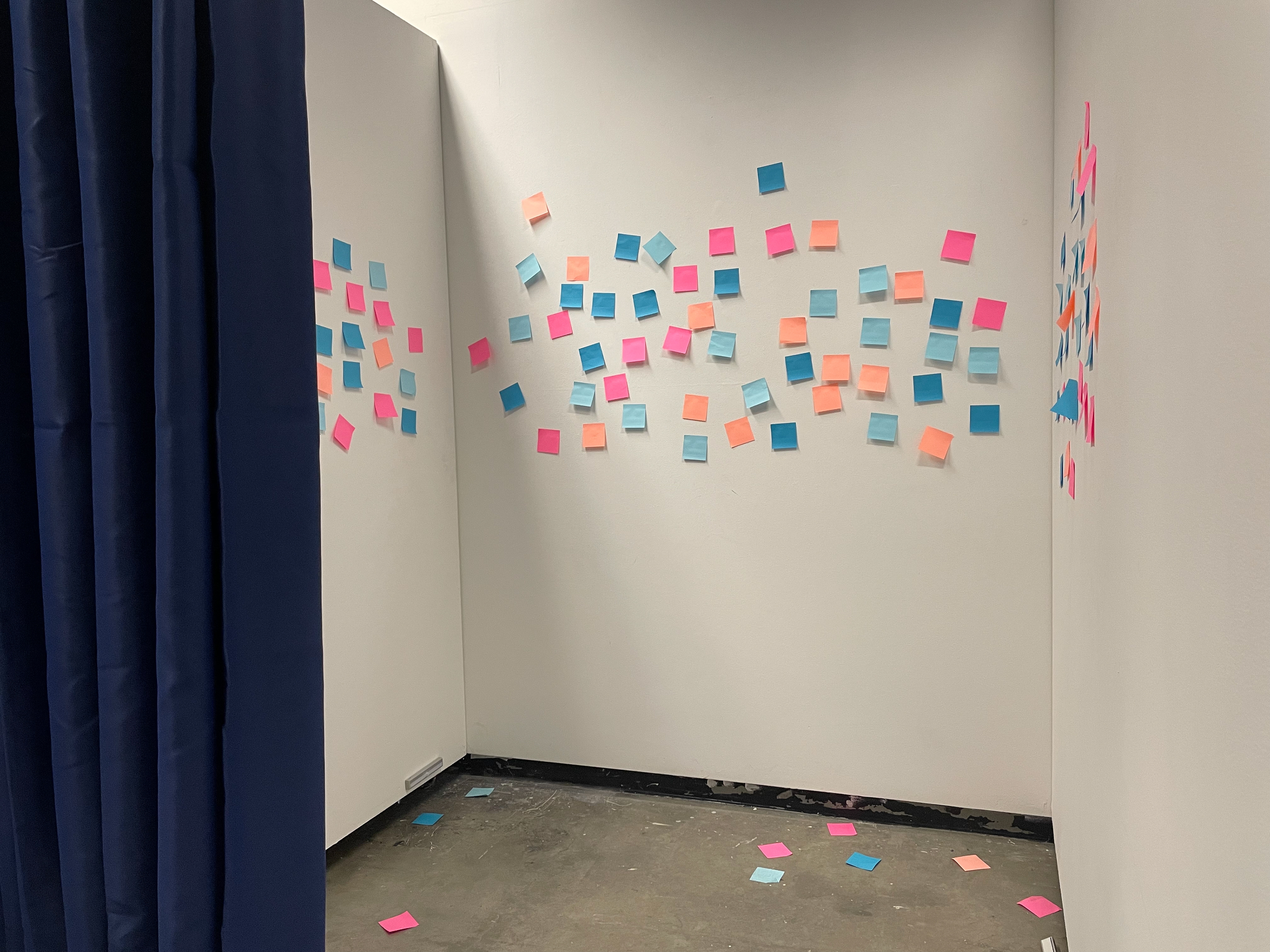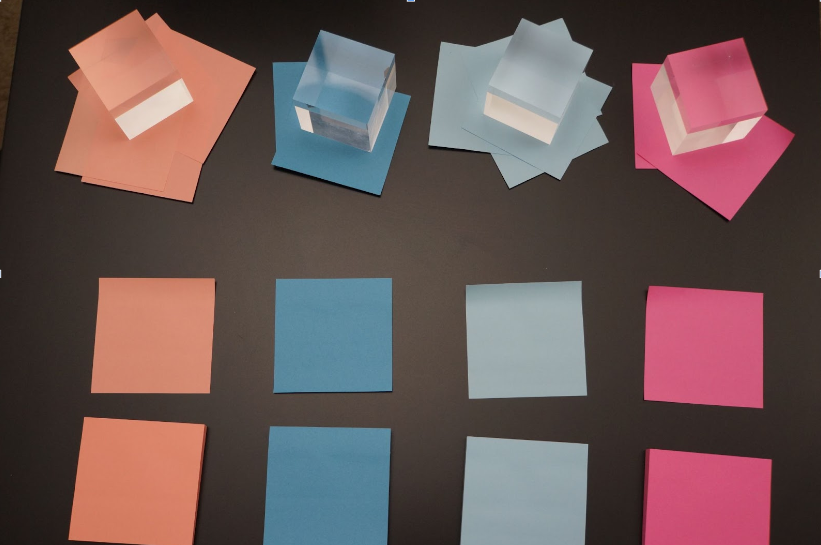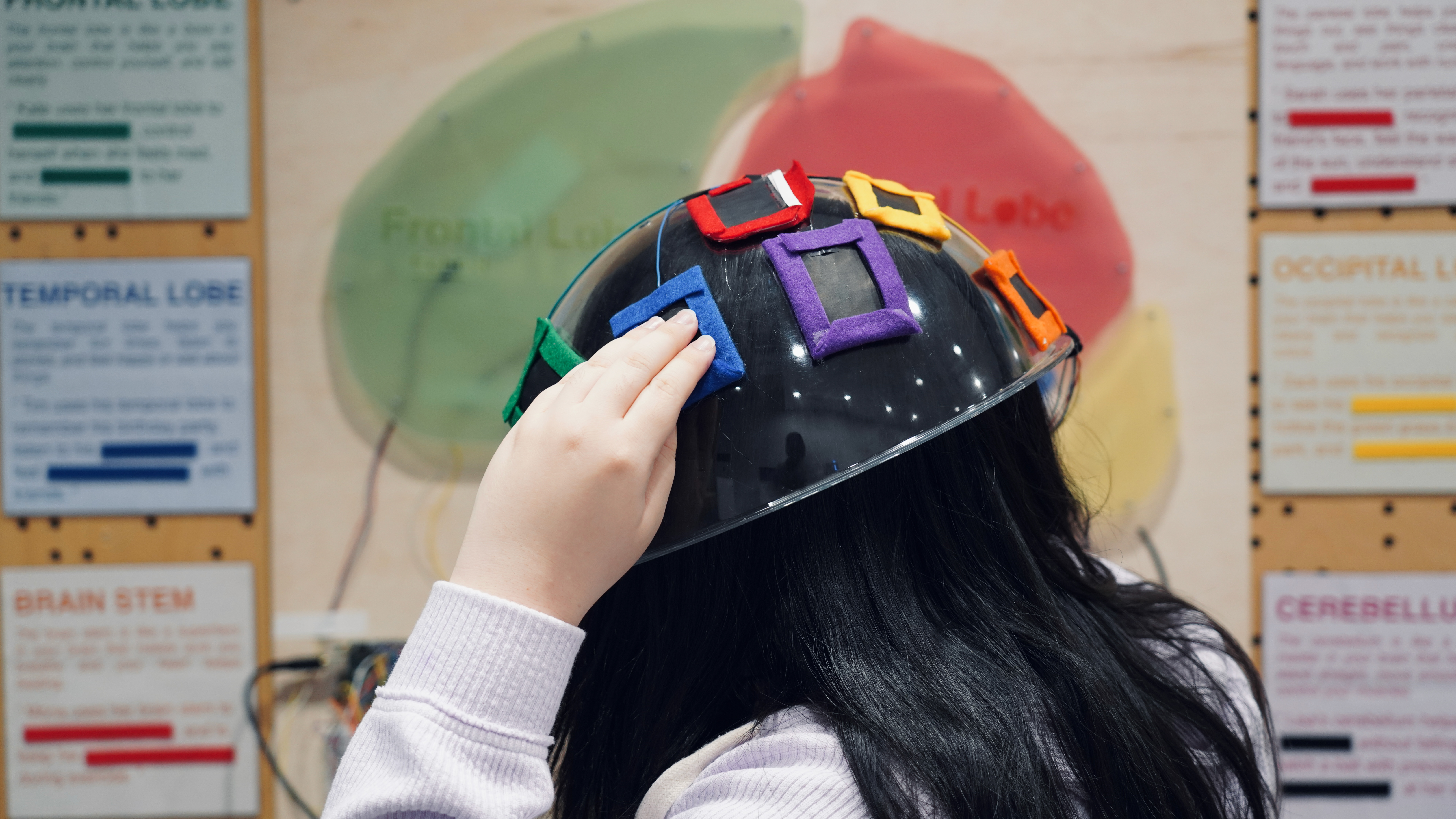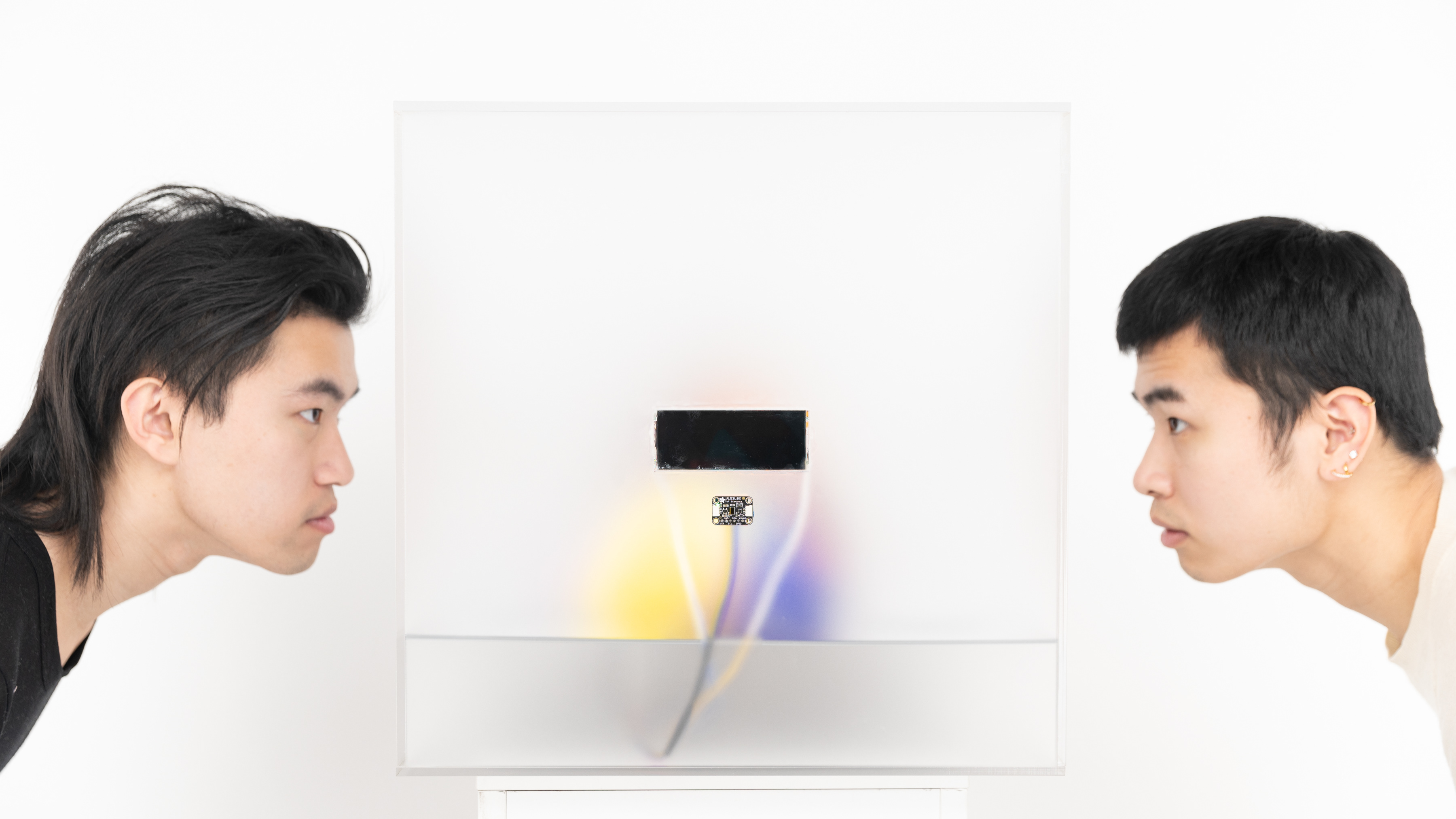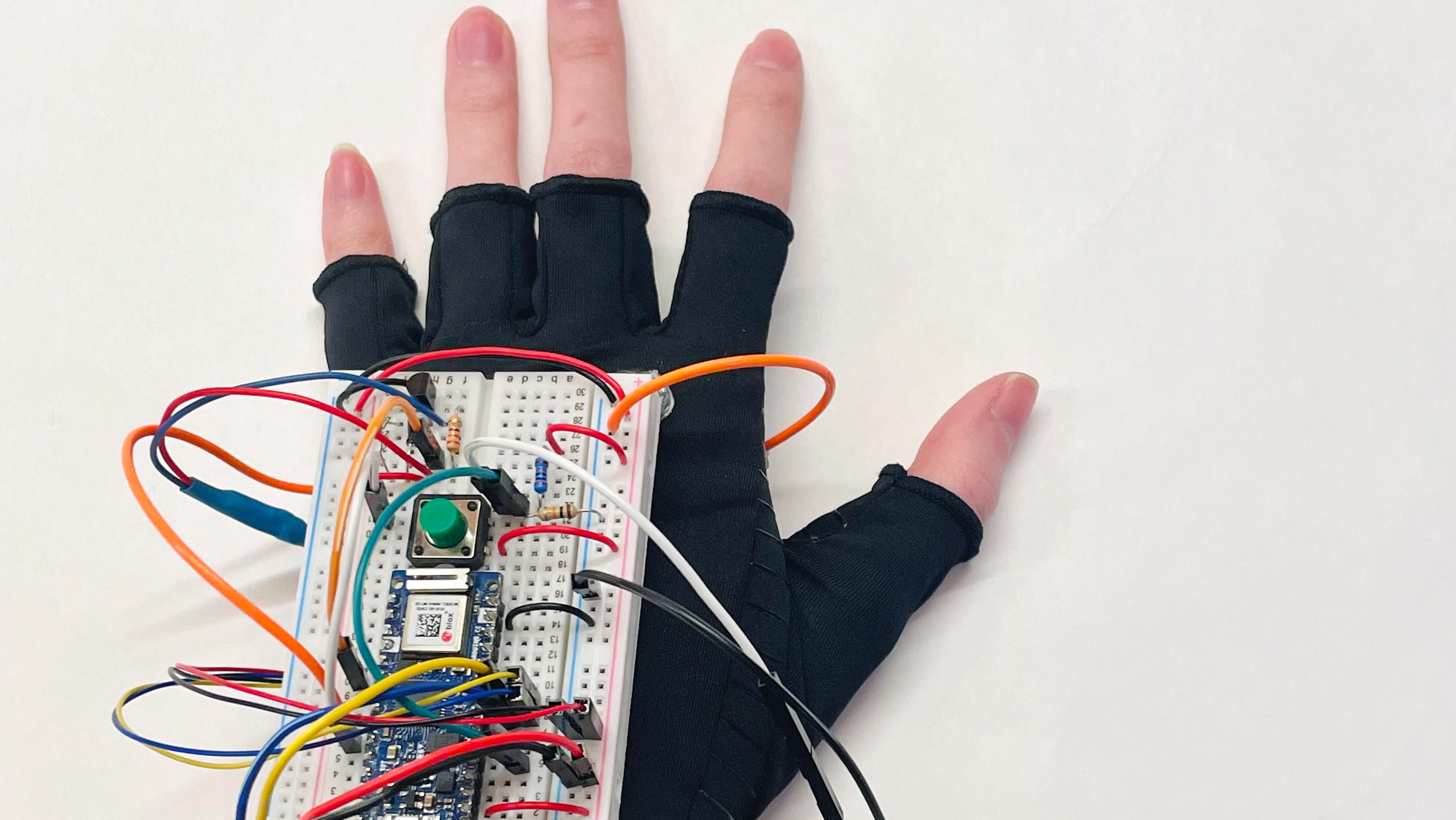Introduction
“Semi-Smart” is a 24/7 claustrophobic club, an adventure field, and a sousveillance system. When invited to the space, each individual will be given the role of an adventurer when information is free to access everywhere inside this dark chamber. Silence is presented, yet the rumors will be echoing around. Darkness surrounds, yet it will be unavoidable to be exposed.
In “Semi-Smart,” with incomplete installations of intelligent devices including motion sensor LEDs, viewers are encouraged to start a treasure hunt within the space, discovering while being discovered in a synchronous manner. Information will exist in its intermediate state in which no complete truth or lies will ever be known. It represents a Utopian approach to data collection while still surrendering to the nature of a globalized social media environment.
In “Semi-Smart,” with incomplete installations of intelligent devices including motion sensor LEDs, viewers are encouraged to start a treasure hunt within the space, discovering while being discovered in a synchronous manner. Information will exist in its intermediate state in which no complete truth or lies will ever be known. It represents a Utopian approach to data collection while still surrendering to the nature of a globalized social media environment.
" Who
Did What
Where
When? "
Inspiration and Genre
In Marie Sester’s work Access in 2003, a robotic spotlight together with an acoustic beam system tracks individuals in public in a way that "the web users do not know that their actions trigger sound towards the target. In effect, both the tracker and the tracked are in a paradoxical communication loop" (Sester, 2003). Therefore, the communication loop that “Semi-Smart” is trying to establish is relatively more fragile because of an increased degree of freedom given to the individuals. However, it still requires a cognitive effort for the viewers to determine to which extent they would like to surveil.
The fragility and fallibility of written text metaphors are an unavoidable alternation of the originality of information during a communication process. Individuality, in this case, becomes prominent when unique handwriting and linguistic choices are made throughout the transformation. Secrets and stories are therefore presented paradoxically in that they are visible only to the person who posts the tweet. The invisible ink creates a discrepancy of knowledge between publicity and privacy even though the secret will be posted on a mainstream social media platform. Similar to Steve Mann’s first implemented ideas of Surveillance and Sousveillance in his work in the 1990s, the power of individuality, which is currently overlooked and always overwhelmed, regains its position when the viewers are assigned both the role of a spectator and an observed subject. Viewers are given total freedom to make a decision on whether they would like to access, or in other words, "invade," relatively private information while taking the risk of being exposed. “Semi-Smart” fulfills curiosity along with minor aggression, and it at the same time leaves the information indeterminate for infinite guessing among the public.
Under the circumstances of an extensive invasion that was performed by accessible electronic devices, data collection seems to become more acceptable and invisible. Products and Devices are gathering data, claiming the necessity of doing so for the sake of better user experiences. When the bar of accessing an interconnected platform is continuously lowered by a push of technology, the responsibility of carrying and progressing a message has been diffused to the public. Australian performance artist Stelar’s work Ear on Arm in 2006 represents an electronic augmentation of the human body, while this work pushes this concept forward to the extent in which the internet on its own, as well as interpersonal relationships, could also fall into the realm of technology embodiment. It gives a retrospective approach that mimics yet challenges the current nature of internet communication by using a physical and tangible interface: sticky notes and ink markers. It brings adult human beings to a more primal level of interaction that sarcastically looks like a treasure-hunting activity among children. Compared to Julia Scher’s work Predictive Engineering(1993- present), which has established a public monitoring system that provides intriguing yet fake information to anticipate viewers’ reactions, “Semi-Smart” creates a juxtaposition of using curiosity as a powerful tool to lower the vigilance that was set up with the self-defense. Yet, it creates an intimate experience while, instead of utilizing public conformity in Julia Scher’s work, independence, privacy, and loneliness are highlighted to make the space safer for more individuality and identity are shown.
The fragility and fallibility of written text metaphors are an unavoidable alternation of the originality of information during a communication process. Individuality, in this case, becomes prominent when unique handwriting and linguistic choices are made throughout the transformation. Secrets and stories are therefore presented paradoxically in that they are visible only to the person who posts the tweet. The invisible ink creates a discrepancy of knowledge between publicity and privacy even though the secret will be posted on a mainstream social media platform. Similar to Steve Mann’s first implemented ideas of Surveillance and Sousveillance in his work in the 1990s, the power of individuality, which is currently overlooked and always overwhelmed, regains its position when the viewers are assigned both the role of a spectator and an observed subject. Viewers are given total freedom to make a decision on whether they would like to access, or in other words, "invade," relatively private information while taking the risk of being exposed. “Semi-Smart” fulfills curiosity along with minor aggression, and it at the same time leaves the information indeterminate for infinite guessing among the public.
Under the circumstances of an extensive invasion that was performed by accessible electronic devices, data collection seems to become more acceptable and invisible. Products and Devices are gathering data, claiming the necessity of doing so for the sake of better user experiences. When the bar of accessing an interconnected platform is continuously lowered by a push of technology, the responsibility of carrying and progressing a message has been diffused to the public. Australian performance artist Stelar’s work Ear on Arm in 2006 represents an electronic augmentation of the human body, while this work pushes this concept forward to the extent in which the internet on its own, as well as interpersonal relationships, could also fall into the realm of technology embodiment. It gives a retrospective approach that mimics yet challenges the current nature of internet communication by using a physical and tangible interface: sticky notes and ink markers. It brings adult human beings to a more primal level of interaction that sarcastically looks like a treasure-hunting activity among children. Compared to Julia Scher’s work Predictive Engineering(1993- present), which has established a public monitoring system that provides intriguing yet fake information to anticipate viewers’ reactions, “Semi-Smart” creates a juxtaposition of using curiosity as a powerful tool to lower the vigilance that was set up with the self-defense. Yet, it creates an intimate experience while, instead of utilizing public conformity in Julia Scher’s work, independence, privacy, and loneliness are highlighted to make the space safer for more individuality and identity are shown.
Installation & Experience Design
Motion sensor LEDs in “Semi-Smart” have a working range of approximately 12ft. Alongside each LED that is attached to each wall of the room, sticky notes are hung in darkness with invisible UV blacklight ink markers ready for use. Viewers might move at a relatively slower speed or take a detour in order to avoid being illuminated by the LEDs.
Notes are invisible under daylight if written by the provided UV ink pen. UV lights will be handed out as ideal torches to navigate around the space. The burden of making the information invisible or not is a satirical mimicry of current privacy settings on social media platforms. There will only be phrases instead of complete sentences written on the wall. Viewers will be instructed tan o write words regarding “Who,” “Did what,” “ Where” and "When" based on their personal experiences that they are reluctant to share in four different pieces of notepaper.
For the final part, viewers will recreate their own version of a story by picking and reassembling notes others put on previously. Viewers are asked to take a picture of the final sentence, post it on Twitter with a hashtag, and put those notes underneath the transparent blocks.
Notes are invisible under daylight if written by the provided UV ink pen. UV lights will be handed out as ideal torches to navigate around the space. The burden of making the information invisible or not is a satirical mimicry of current privacy settings on social media platforms. There will only be phrases instead of complete sentences written on the wall. Viewers will be instructed tan o write words regarding “Who,” “Did what,” “ Where” and "When" based on their personal experiences that they are reluctant to share in four different pieces of notepaper.
For the final part, viewers will recreate their own version of a story by picking and reassembling notes others put on previously. Viewers are asked to take a picture of the final sentence, post it on Twitter with a hashtag, and put those notes underneath the transparent blocks.
Task Flow and Emotion Journey
Difficulties and Solutions
Regarding the issue that participants might not post anything on their personal social media accounts if asked by a student artist. I have tried using a motion sensor that connected with IFTTT and a smart plug to automatically post on Twitter when a motion sensor LED was triggered (see fig.1-3). I consider the ignorance and reluctance of showing identity or privacy as a reflection of the nature of anonymity during online communication. Willingness to participate in anonymous public experiments results in such a contrary that coincides with my original motive. Therefore, I left the action of posting tweets optional for participants, and no information will be collected when they trigger the LEDs. Such literacy could better reflect the open nature of anonymity on public social media platforms.
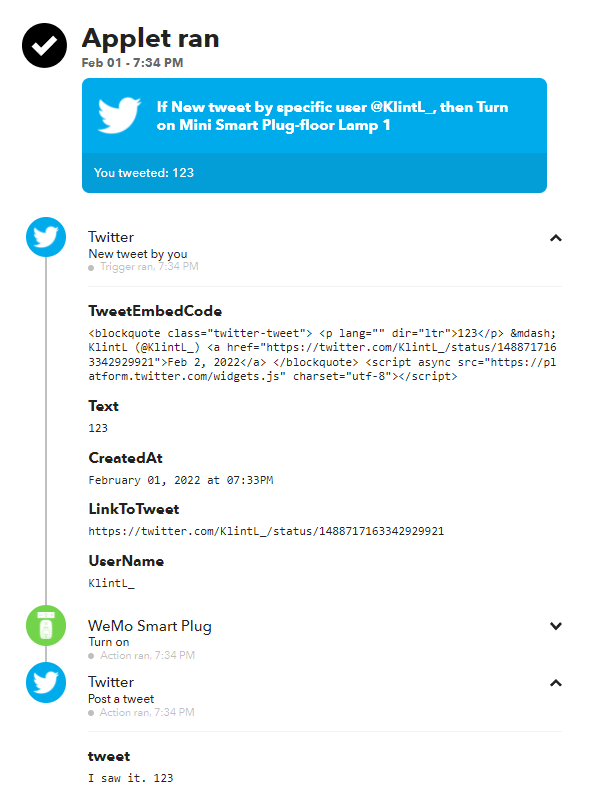
Fig.1
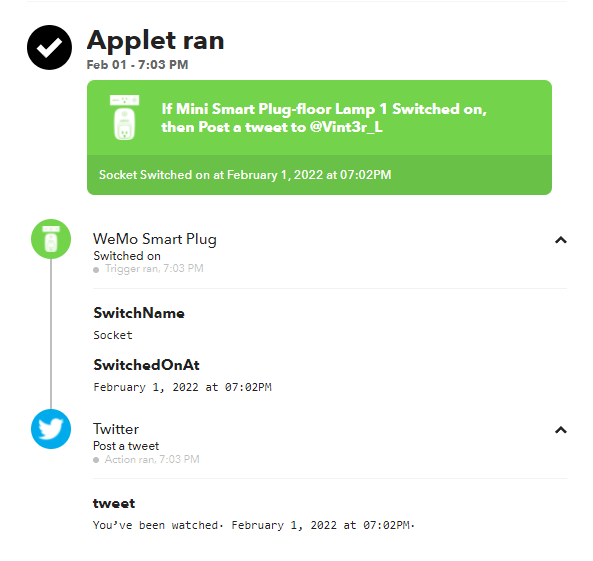
Fig.2

Fig.3
The whole interaction process is relatively complicated. During the first critique with my professor and classmates, some pointed out that my instructions were hard to follow when asking participants to do a continuous series of actions. Some also asked what should we expect if participants failed to follow the instructions. In order to catch different outcomes depending on different user scenarios, I simplified the whole process into 3 steps and rephrase my sentences for a better understanding (see fig.4-6).

Fig.4
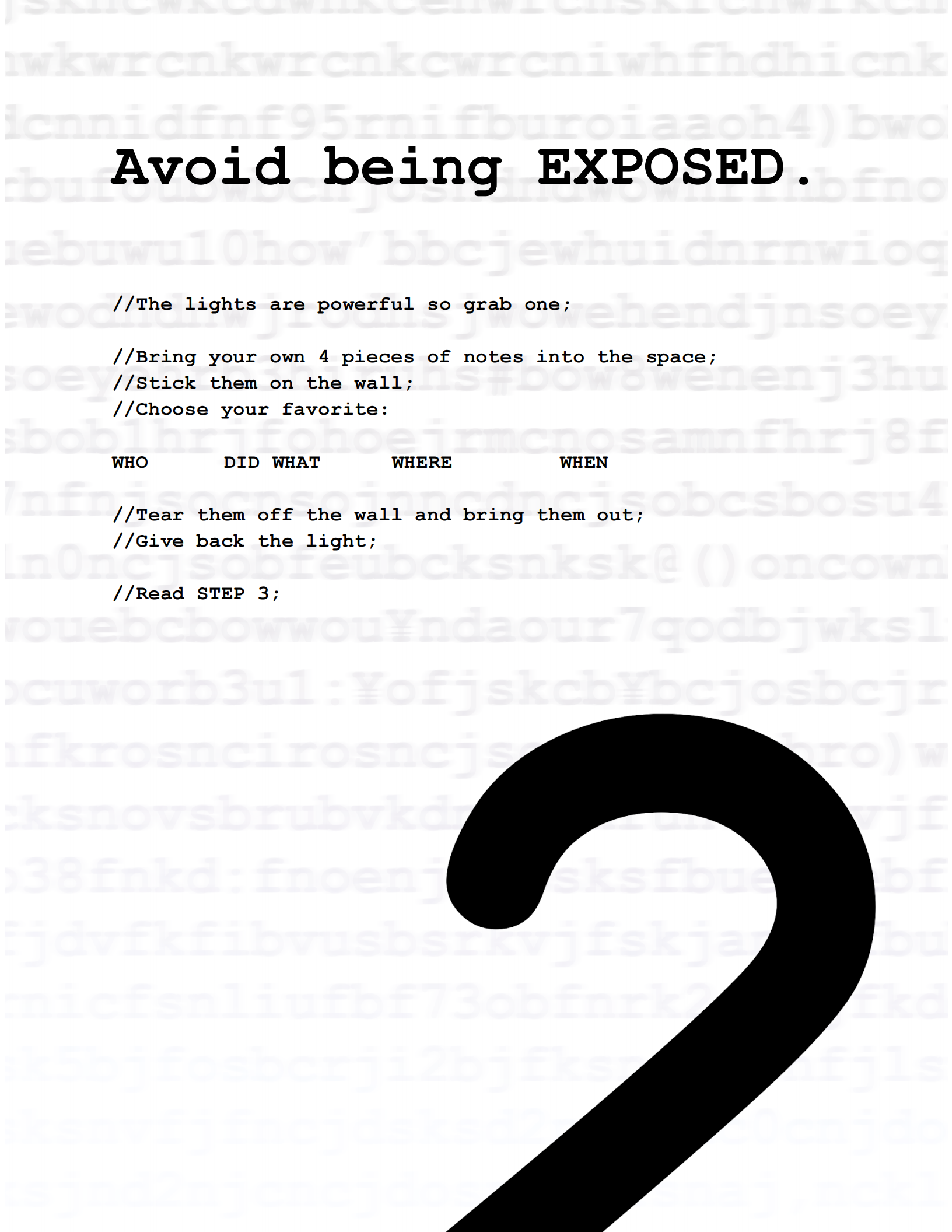
Fig.5

Fig.6
Video Demo for the First Mock-up
Exhibition Documentation
